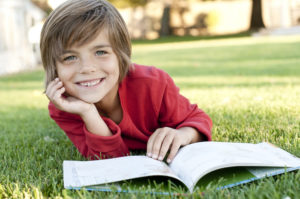
“My seven-year-old daughter says she’s stressed-out. But what kid isn’t stressed-out nowadays?” my dentist said.
As I lay there mouth opened, unable to speak, I thought about my dentist’s daughter and other stressed out kids. Seven seems young to say you’re stressed-out. Maybe ninety-seven is too young to say you’re stressed-out.
Are kids more stressed-out than generations past?
My mother dealt with World War II when she was seven. My grandmother was seven during World War I. We had monthly atomic bomb drills when I was seven. Perhaps we didn’t have the language for stressed-out. Maybe we had a stronger social network to relieve the tensions of the time. Somehow, I sense an underlying truth in my dentist’s question, “What kid isn’t stressed out?”
Stress is not all bad. It can help energize us to get things done in our lives. Stress is the body’s chemical and neural response to a situation that is threatening or frightening. With stress our heart rate increases, our blood pressure rises, stress hormones increase. The fight or flight instinct emerges in our behavior and our thoughts.
Stress can become toxic when our body’s systems stay on high alert for weeks or months at a time. Elevated levels of the stress hormone, cortisol, can damage vital parts of the brain, such as the hippocampus, which regulates memory and learning. Sleep and appetite are disrupted and behavior problems related to our flight or fight instincts may appear. Lingering illnesses, such as the cold or cough that won’t go away, may be signs of toxic stress in our children, and in ourselves.
Our children cannot deal with the fears and subsequent stresses of life on their own. Our children need the presence and assistance of caring adults who can reassure and comfort them. Children who emerge from severe traumas with few or no serious effects have strong relationships with supportive adults. Positive adult relationships help keep stress levels in a manageable zone for children. With reassurance and trust from adults, a child’s brain development and physical health are not compromised by the overabundance of stress hormones.
Dr. John Gottman, in Raising an Emotionally Intelligent Child, tells us that the fears that most children face, varied as they may seem, are related to these six issues:
- Fear of powerlessness
- Fear of abandonment
- Fear of the dark
- Fear of bad dreams
- Fear of parental conflict
- Fear of death
We can help our children by assisting them in recognizing their fears, and giving those fears a name when they appear. We can talk about those fears in an empathetic way and not dismiss our children or their fears as being babyish. We can give our children strategies for dealing with dangerous situations, for example having a fire escape plan for your family, how to call for help or how to deal with strangers. We can help our children learn skills to cope with the feeling of powerlessness.
We also need to listen for the emotion behind the questions our children might ask. Asking about power outages may be a question about how to deal with the fear in complete darkness, and not a question about electricity generation.
The stories that children, around age six, love to listen to and read, usually address all of the fears listed above. In books, such as Nancy Drew and the Hardy Boys, The Lord of the Rings, Charlotte’s Web to Harry Potter, the issues surrounding these six fundamental childhood fears are handled in a way that speaks the truth to our children. These stories ignite our children’s imagination about how they might act in similar situations.
A stressed-out child is a child who feels frightening or threatened. Let’s listen and help our children name their fears and learn how to deal head on with those fears with our loving support. Let’s help every child feel safe and loved.


Thank you Maren, I love reading your advice and observations. I also think it is helpful for us as parents to think about exposure, how many screens are on, what images they might be taking in that are overwhelming and too challenging to understand. There is such a shift in raising young children with a spirit of vigilance and protection to helping the older child have strength in dealing with their real world stressors. It is a big topic but teaching them to believe in their own resilience and strength starts with us listening to their fears and helping them feel brave, connected with trusting adults and teaching them to tolerate the differences they see in others too. Thank you so much for your posts:)
Maria,
Good morning and aloha!
Thank you for that wise comment. I appreciate you.